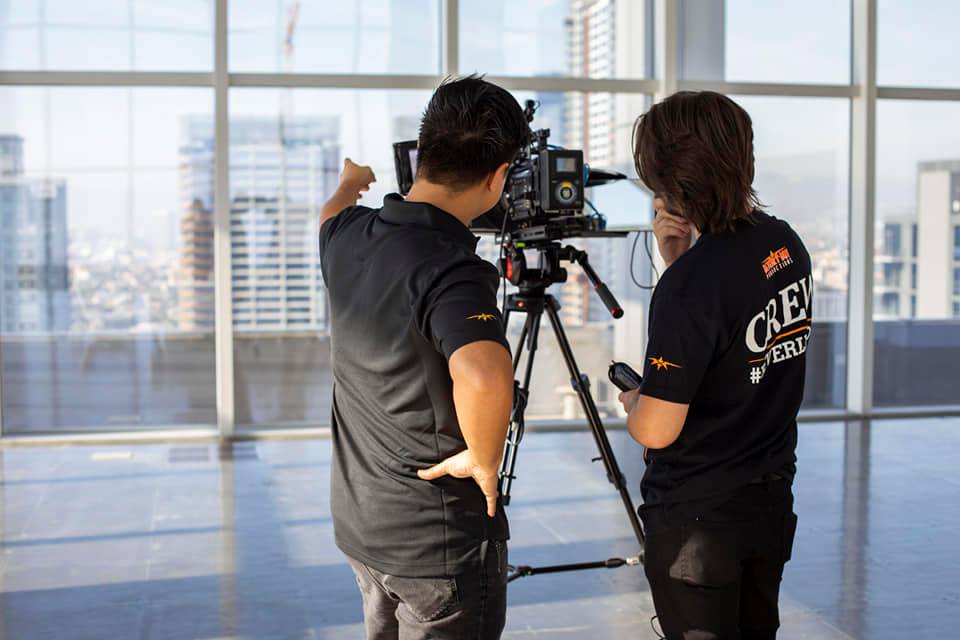10 Cinematography Techniques You Won’t Learn in Film School
Cinematography is a lot of things. It’s camera angles and movements. It’s lighting and sound recording. It’s the work of a professional that spent years in film school mastering the basics and then several more years in the field doing what they know best. But, some of the most advanced and widely used cinematography techniques in the industry are not learned in film school but rather from the time you spend in the field. Follow along as we show you 15 cinematography techniques and camera movements that you won’t learn in class.
1. Create Reasonable Art

You learn in film school how to tell a story, and you learn that you need to take your art seriously, but do you learn how to create reasonable art that is visually versed. Treat your shots as if each frame is a work of art that, if you work hard enough at, you can get to be played out perfectly.
Remember that timing is everything with cinematography so while you aim to make your shots great, also aim for perfection on the fly.
Use the camera angles and movements you’ve worked years to perfect in a split second decision and familiarize yourself with the power of using imagery to produce powerful artist techniques. Together, the outcome will be something that impresses even the most difficult to please audience.
2. Be Creative and Take Chances
As you learn to push yourself to the creative limits, you will also need to learn to take chances. Emphasize the value of risk versus reward.
Recognize that taking risks can lead to a huge payoff when it comes to art and know that cinematography without risk is not nearly as elaborate or artistically defined as that in which a chance at risk was taken.
Don’t be afraid to sometimes break the simple rules that you were taught in film school. Don’t be afraid to step outside the techniques you think you know so well and try something new. Playing it safe in cinematography rarely results in an award winning performance.
3. Read the Script-Several Times

Of course you need to know the script, that’s a given, but did you know that reading it several times is key to producing powerful cinematic techniques that stand out? A great cinematographer must know the script so well that they can foresee the next shot and the action that is set to occur before it happens.
They must understand mindset and the way the art of storytelling comes together just as much as they know the top industry tools for the trade.
Learn how others are shifting the guidelines and making art out of the most basic production techniques and take note in your script so that, when the time comes, you too can make powerful stances to strike emotion with the script your shooting.
4. Know Your Gear
Great cinematographers don’t learn all the best gear for the job in film school. They learn the basics. However, not all shoots will come with all the top gear and you’ll need to know what the best gear for the job is, even if you’re working on a budget.
Familiarize yourself with as many types and styles of cameras and lenses as you can. Know what it means to have access to the top of the line gear and the bottom of the barrel. And know how you can produce powerful cinematic shots with both.
5. Testing, Testing, 1, 2

Make sure you are testing your camera just like you learned in film school but also make sure you’re checking the basics before you shoot. For some reason, many cinematographers fail to keep traditional camera tests on the list of preparatory steps they take before the shoot.
As soon as you get your hands on the camera, perform the basic tests of chip chart, color chart and with human models to ensure you know how the camera will react to the lighting and various shooting techniques that you intend to use on the set.
If you don’t want to have ten people sitting around while you figure out why the shot looks awful, you’ll perform basic tests when you have time.
6. Create Powerful Shot Lists
Not just any shot list, but a powerful list of shots that is both organized and well-planned. You learned how to create a shot list in film school, but did you learn how to perfect it?
Perfecting the shot list is something that comes with ample time in the field as you learn the tools on the set, what you are capable of, and how you can use your camera to tell the story of the script.
In fact, the cinematography techniques that you are well aware of and know, are dependent on your ability to properly build a shot list that outlines them and utilizes the tools of the trade–so get to it!
7. Know Your Location

Great cinematographers know the location just as well as they know their equipment and the script. Some of the best pictures come from cinematographers that have shot in the location before. If you’re not familiar with the shoot location ahead of time, take a visit, with your camera before the shoot.
The better you know the location and what to expect, the greater your ability will be to not only capture great shots but to do so with ease while under the pressure of the director and others on set.
8. Check the Call Sheet
For what? Your shoot time, the expectations and what you can expect. You may have learned to check the call sheet in
, but did you learn that important details about the shoot are best found in the call sheet? Did you learn that the call sheet will help you fully understand how long you can expect between the crew call and your first shot? Everything you need to know about planning and preparing your equipment for the shoot will be found in the call sheet. Just check it!
9. Prepare Your Cinematography Workflow

Your workflow will vary as you grow and learn advanced cinematography techniques. Basically, you need to have a plan in place that works for you, every shoot. You need to plan to block, light, rehearse, adjust, shoot and repeat the process.
You’ll do this for every setup, every shoot, every time. As you do so, formulate a plan for how you will block your subject, how you will use light to your shooting advantage, and what steps you will take to ensure the perfect shot every time. Adjust your workflow as you learn and make it your own.
10. Be a Leader
Great cinematographers are great leaders. If you’re not prepared to lead your crew, now is the time. Learn it. Some of the best cinematography techniques come from crews that work together seamlessly with one another to produce natural, practical, powerful shots.
A crew that is unhappy won’t get much accomplished. Be clear and respect those around you. If you make a mistake, don’t be afraid to admit it and to learn from it. Great leaders aren’t perfect, but they do work well with others and admit when they are wrong.
